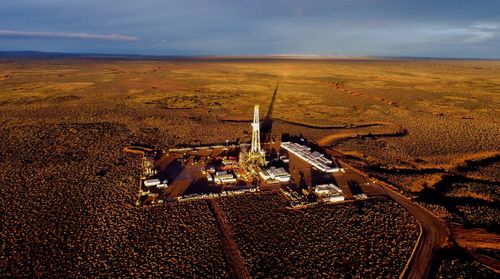Revolutionizing Production Profiling with DFOS
Analyzing Distributed Fiber Optic Sensing (DFOS) data in a producing well after undergoing hydraulic fracturing can provide valuable information into well performance.
In China, a gas field operator required a non-intrusive approach for analysis of well performance in deviated/horizontal wells. The particular well that was analyzed is characterized by a production rate of 180,000.00 m3/d of gas. To decrease safety risks, logging time, and costs connected with the use of standard Production Logging Tool (PLT), the client decided to use fiber optic sensing to collect temperature and acoustic data for production surveillance.

The well in this case study was logged using both AP Sensing’s DTS N45-Series and DAS N52-Series integrated into the same coiled tubing. Over a period of approximately 60 hours, Distributed Temperature Sensing (DTS) and Distributed Acoustic Sensing (DAS) data were acquired at various surface rates and shut-in phases to gain insights into the well’s behavior.
Specialized PLATO-DTS software from Interpretive Software Products (ISP) was employed for quantitative production profiling based on the acquired temperature data. The actual production rates are found by optimizing the well and temperature model. The raw DAS data was processed using specialized ARIANE-SP2S software.
Coiled tubing equipped with fiber optics alongside the interrogator units enabled continuous temperature and acoustic sensing during the various well operations at the gas field. By leveraging the acquired temperature and acoustic data, analyzed using market-leading software solutions from ISP, it was possible to quantify the flow profiling. This information was crucial for evaluating production effectiveness and identifying potential issues such as water breakthrough.
The implementation of DFOS for production monitoring brought several significant benefits to this project. Firstly, it eliminated the need for invasive production logging operations, reducing the associated HSE risks. The optical fibers used for DTS and DAS were deployed via coiled tubing, minimizing disruption to the wellbore and ensuring the integrity of the operation. Furthermore, this non-intrusive method resulted in cost savings compared to conventional approaches. Lastly, continuous data acquisition provided valuable insights over a long period, allowing for better decision-making and production optimization.
Overall, the implementation of distributed fiber optic sensing technology, specifically DTS and DAS, for production monitoring in the gas well in China proved to be a highly effective solution. It offered real-time, non-intrusive monitoring, quantifiable flow profiling, and significant HSE risk reduction.
